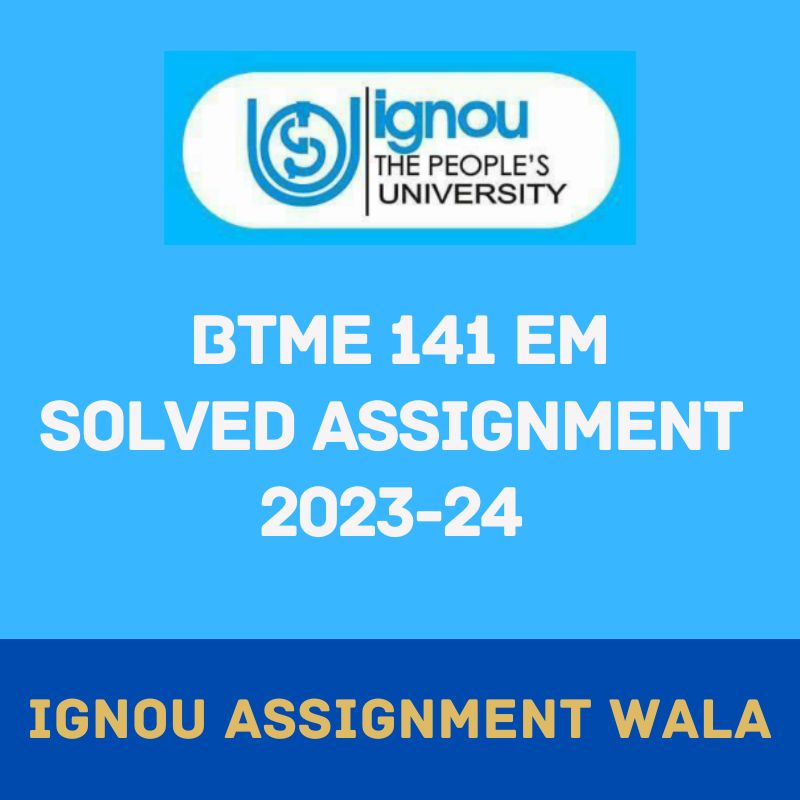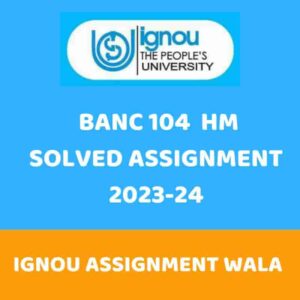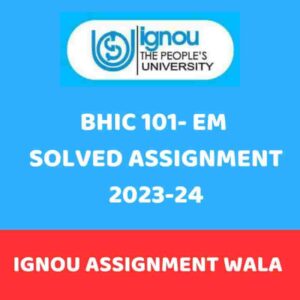Section A
1. Explain the importance of transport regulations and policies in the realm of tourism
Transport regulations and policies play a pivotal role in shaping the landscape of the tourism industry. As the lifeblood of travel, transport connects destinations, enables mobility, and fosters economic growth within the tourism sector. The significance of regulations and policies in this realm cannot be overstated, as they establish the framework for safe, efficient, and sustainable travel experiences.
Firstly, transport regulations ensure the safety and security of travelers. Implementing standards for vehicles, infrastructure, and operational procedures mitigates risks and safeguards passengers. This is especially crucial in the tourism sector, where travelers often explore unfamiliar territories and rely on various modes of transportation. Adhering to safety protocols minimizes accidents, ensuring tourists have peace of mind and enhancing their overall experience.
Moreover, these regulations promote reliability and consistency in transport services. Establishing guidelines for scheduling, maintenance, and service quality ensures that travelers can depend on efficient and timely transportation. Consistency in service builds trust among tourists, encouraging repeat visits and positive word-of-mouth recommendations, thus bolstering the tourism industry.
Transport policies also play a significant role in environmental sustainability. The tourism industry relies heavily on transportation, which contributes to carbon emissions and environmental degradation. Implementing policies that incentivize or mandate the use of eco-friendly transportation modes, such as electric vehicles or promoting public transportation systems, helps reduce the ecological footprint of tourism. This not only preserves natural resources but also aligns with the growing trend of eco-conscious travel, appealing to a broader spectrum of tourists.
Efficient transport regulations and policies are instrumental in promoting accessibility and inclusivity in tourism. Making transportation infrastructure more accessible for individuals with disabilities ensures that tourism destinations are welcoming and accommodating to a diverse range of visitors. This inclusivity fosters a more vibrant and dynamic tourism sector by opening up opportunities for a wider demographic of travelers.
Furthermore, transport policies contribute significantly to the economic growth of the tourism industry. Efficient and well-connected transport networks facilitate the movement of tourists, goods, and services, stimulating economic activities in tourist destinations. Improved connectivity attracts investment in infrastructure and services, creating job opportunities and driving local economies.
In addition to physical infrastructure, regulations also impact pricing and competitiveness within the tourism sector. Policies governing tariffs, taxes, and subsidies influence the cost structure of transportation services. This, in turn, affects the affordability of travel for tourists and the competitiveness of destinations. Well-designed policies that strike a balance between affordability and sustainability can boost tourism by making it more accessible to a broader audience.
Collaboration among stakeholders is crucial in shaping effective transport regulations and policies. Governments, transportation providers, tourism boards, and local communities need to work together to create comprehensive strategies that address the diverse needs of the industry. This collaboration can lead to the development of integrated transportation systems, seamless connectivity between destinations, and the implementation of innovative solutions for sustainable travel.
In conclusion, transport regulations and policies are the backbone of the tourism industry. They ensure safety, reliability, sustainability, and accessibility, all of which are essential for fostering a thriving and competitive tourism sector. A well-structured regulatory framework and thoughtful policies not only benefit tourists but also contribute to the economic development and overall success of destinations worldwide. Therefore, continuous evaluation, adaptation, and implementation of effective transport regulations and policies remain imperative for the growth and sustainability of the tourism industry.
2. Define the various tourist circuits of India connected through the road transport
system.
India boasts diverse tourist circuits interconnected through its extensive road transport system. These circuits showcase the country’s rich cultural heritage, natural beauty, historical significance, and religious diversity. Here are some prominent tourist circuits linked by road transport:
**1. Golden Triangle Circuit:**
– **Route:** Delhi – Agra – Jaipur – Delhi
– **Highlights:** This circuit encompasses iconic landmarks like the Taj Mahal in Agra, the forts and palaces of Jaipur, and the historical sites of Delhi. It’s a journey through India’s Mughal and Rajputana heritage.
**2. Heritage Circuit of Rajasthan:**
– **Route:** Jaipur – Jodhpur – Udaipur – Ranthambore – Jaipur
– **Highlights:** Rajasthan’s forts, palaces, and vibrant culture define this circuit. From the majestic Mehrangarh Fort in Jodhpur to the romantic city of Udaipur, this circuit offers a glimpse into the royal history of Rajasthan.
**3. Temple Circuit of South India:**
– **Route:** Chennai – Mahabalipuram – Pondicherry – Thanjavur – Madurai – Rameshwaram – Kanyakumari – Trivandrum
– **Highlights:** This circuit showcases the architectural marvels of South Indian temples, including the Shore Temple in Mahabalipuram, Brihadeeswarar Temple in Thanjavur, and the spiritual town of Rameshwaram.
**4. East Coast Cultural Circuit:**
– **Route:** Kolkata – Puri – Bhubaneswar – Konark – Kolkata
– **Highlights:** From the bustling city of Kolkata to the religious significance of Puri’s Jagannath Temple and the architectural brilliance of the Sun Temple in Konark, this circuit unveils the cultural richness of India’s eastern coast.
**5. Himalayan Circuit:**
– **Route:** Delhi – Shimla – Manali – Dharamshala – Amritsar – Delhi
– **Highlights:** Travelers can experience the scenic beauty of the Himalayas, explore hill stations like Shimla and Manali, visit the Dalai Lama’s residence in Dharamshala, and witness the grandeur of the Golden Temple in Amritsar.
**6. Coastal Karnataka Circuit:**
– **Route:** Mangalore – Udupi – Murudeshwar – Gokarna – Karwar – Mangalore
– **Highlights:** This circuit takes you through picturesque coastal towns, ancient temples, and pristine beaches, showcasing the cultural and natural beauty of Karnataka’s coastline.
**7. Wildlife Circuit – Madhya Pradesh:**
– **Route:** Bhopal – Sanchi – Bhimbetka – Jabalpur – Kanha National Park – Bandhavgarh National Park – Pench National Park – Bhopal
– **Highlights:** It offers a blend of history, culture, and wildlife. Visitors can explore UNESCO World Heritage sites like Sanchi Stupa, ancient rock shelters at Bhimbetka, and go on safaris in renowned national parks.
**8. Western Ghats Circuit:**
– **Route:** Mumbai – Pune – Mahabaleshwar – Goa – Mumbai
– **Highlights:** This circuit covers the lush greenery of the Western Ghats, the scenic hill stations of Mahabaleshwar, the vibrant beaches of Goa, and the bustling city life of Mumbai.
**Road transport** plays a vital role in connecting these circuits, providing travelers with accessibility and convenience. India’s extensive network of national highways, state highways, and well-maintained roads facilitates seamless travel between these tourist destinations. Moreover, various modes of road transport, including buses, taxis, and private vehicles, cater to the diverse preferences and budgets of travelers.
These circuits not only offer a visual treat but also provide an immersive experience into India’s diverse culture, heritage, traditions, and landscapes, making them popular choices for both domestic and international tourists exploring the vast tapestry of India.
Section B
3. Define the following – (2×5=10)
a) CRS
b) GDS
Certainly! Here are the definitions:
a) CRS – Computer Reservation System: A Computer Reservation System is a computerized system used by travel agencies and companies in the travel industry to conduct transactions related to travel and tourism. It allows users to access and book airline tickets, hotel accommodations, car rentals, and other travel-related services.
b) GDS – Global Distribution System: A Global Distribution System is a network/platform that enables transactions between travel industry service providers (such as airlines, hotels, car rental companies) and travel agencies or customers. GDSs provide real-time access to inventory, pricing, availability, and booking functionality for various travel-related services. Examples of GDS include Amadeus, Sabre, and Travelport.
4. What are the key milestones in the growth and development of railway transportation in our
country? 10
Railway transportation has played a pivotal role in the development of nations globally, and the story of its growth in any country is a tale of innovation, progress, and societal change. In the case of our country, several key milestones mark the evolution and expansion of the railway network, each contributing significantly to economic, social, and infrastructural progress.
**Inception and Early Years (19th Century):**
The birth of railways in our country can be traced back to the 19th century. The first railway line was laid down during [Year/Decade] between [Locations], marking the beginning of this transformative mode of transportation. Initially, these lines were limited in length and capacity, but they sparked a revolution in travel and trade.
**Expansion and National Connectivity:**
One of the critical milestones was the rapid expansion of the railway network across various regions and states. This expansion, which occurred during [Time Period], facilitated national connectivity and integration. The linking of major cities and industrial centers not only boosted trade but also fostered cultural exchange and mobility.
**Technological Advancements:**
The evolution of railway technology significantly impacted its growth. The introduction of steam engines, later replaced by diesel and electric locomotives, revolutionized the efficiency and speed of transportation. Breakthroughs in signaling systems, track construction, and rolling stock design continually improved safety and comfort for passengers and cargo.
**Strategic and Economic Impact:**
Railways played a crucial role in shaping the economic landscape of our country. They became the backbone of freight transportation, facilitating the movement of raw materials, goods, and agricultural produce. This led to the development of industries and helped in the decentralization of economic activities.
**Social Impact and Accessibility:**
The railway system brought about a societal transformation by making travel more accessible and affordable to the masses. It enabled people from different socio-economic backgrounds to travel for work, education, leisure, and migration. This increased mobility contributed to cultural exchange and national integration.
**Modernization and High-Speed Rail:**
The advent of high-speed rail in recent decades represents a milestone in itself. Introducing bullet trains or high-speed rail networks between major cities has reduced travel times drastically, enhancing efficiency and connectivity. This modernization aligns with global standards and showcases our country’s commitment to technological advancement.
**Sustainability and Innovation:**
In response to environmental concerns, railways have undergone a transformation toward sustainability. The incorporation of eco-friendly practices, such as electrification, energy-efficient technologies, and the use of renewable resources, reflects a commitment to reducing carbon footprints and promoting a greener mode of transportation.
**Challenges and Future Prospects:**
Despite its successes, the railway sector faces challenges, such as infrastructural upgrades, modernization, and ensuring safety standards. Overcoming these challenges requires continued investment in research, technology, and infrastructure.
Looking ahead, the future of railways in our country seems promising. With ongoing projects aimed at network expansion, technology adoption, and sustainability, the railway sector is poised to play an even more significant role in fostering economic growth, social development, and environmental conservation.
In conclusion, the growth of railway transportation in our country has been a journey marked by significant milestones, each contributing to its evolution and impact on society. From its humble beginnings to its current state of technological advancement, the railways continue to be a vital component of our nation’s progress and development.
5. Discuss the role played by ICAO and DGCA in ensuring civil aviation operations and
regulations.
The International Civil Aviation Organization (ICAO) and the Directorate General of Civil Aviation (DGCA) play pivotal roles in ensuring the safety, security, and efficiency of civil aviation operations worldwide. Each entity has specific functions and responsibilities that contribute to the regulation and oversight of the aviation industry.
### **ICAO:**
#### Setting International Standards:
ICAO, a specialized agency of the United Nations, establishes global standards and recommended practices for aviation. These standards cover various aspects of civil aviation, including safety, security, air navigation, environmental protection, and efficiency. They serve as a framework for member states to develop their regulations, ensuring uniformity and harmonization across borders.
#### Facilitating Cooperation:
ICAO acts as a forum for member states to collaborate and exchange information on aviation-related matters. It promotes cooperation among nations, airlines, airports, and regulatory authorities to enhance the safety and security of international air travel.
#### Technical Assistance and Training:
ICAO provides technical assistance and training programs to member states, especially developing countries, to help them meet international standards and build their aviation capabilities. This assistance includes support in infrastructure development, regulatory frameworks, and human resource training.
#### Monitoring and Auditing:
The organization conducts audits, assessments, and safety oversight reviews of member states to ensure compliance with established standards. These evaluations help identify areas for improvement and assist countries in enhancing their regulatory frameworks and operational practices.
### **DGCA:**
#### Regulatory Oversight:
The Directorate General of Civil Aviation (DGCA) functions as the regulatory body within individual countries. It oversees and regulates civil aviation activities, including airlines, airports, aircraft operations, licensing of personnel, and airworthiness of aircraft.
#### Enforcing Regulations:
DGCA enforces national regulations and guidelines based on ICAO standards. It monitors compliance by conducting inspections, audits, and issuing certifications to ensure that airlines, airports, and aviation personnel meet specified safety and operational standards.
#### Investigating Incidents:
In the event of accidents or incidents, DGCA conducts thorough investigations to determine the causes and contributing factors. These investigations help in identifying safety issues and implementing corrective measures to prevent similar occurrences in the future.
#### Continuous Monitoring and Improvement:
DGCA continuously monitors the performance of airlines, airports, and aviation personnel to ensure ongoing compliance with regulations. It revises and updates standards and regulations as necessary to adapt to evolving technologies and changing global aviation trends.
### **Collaboration between ICAO and DGCA:**
The relationship between ICAO and DGCA is crucial in ensuring the effectiveness of global aviation regulations. ICAO sets the international standards and provides guidelines, while DGCA implements and enforces these standards at a national level. Collaboration between the two ensures that safety, security, and operational efficiency are maintained across borders while respecting each country’s sovereignty.
In conclusion, ICAO and DGCA play complementary roles in ensuring the safety, security, and regulation of civil aviation operations. Their efforts contribute significantly to maintaining a robust and standardized framework for aviation globally, fostering safe and efficient air travel for millions of passengers every day.
Section C
Answer the following questions in about 100 words each.
6. Elaborate upon the different types of Cruise Ports in India. 6
7. Define the following:- (2×3=6)
a) IATO
b) Business Linkages
8. How Artificial Intelligence (AI) and Chatbot can be used by a five-star hotel? 6
9. What is the difference between Virtual Reality and Augmented Reality? 6
10. Explain the following – (2×3=6)
a) Objectives of FHRAI
b) Apartment Hotels
Sure, let’s break down these questions:
6. **Types of Cruise Ports in India:**
India hosts various types of cruise ports, including major, intermediate, and minor ports. Major ports like Mumbai, Cochin, Chennai, and Mormugao handle significant passenger traffic and have extensive infrastructure. Intermediate ports, such as Mangalore and Vishakhapatnam, have moderate facilities and attract medium-sized cruise ships. Minor ports like Andaman and Lakshadweep are smaller in scale and cater to niche tourism. Each type differs in terms of infrastructure, capacity, and services offered to cruise liners and passengers.
7. **Definitions:**
a) **IATO (Indian Association of Tour Operators):** IATO is a national body of tour operators in India. It represents the interests of tour operators and promotes tourism in the country by setting standards, providing a platform for networking, and advocating policies beneficial to the industry.
b) **Business Linkages:** Business linkages refer to connections or relationships established between different businesses or entities to facilitate mutually beneficial exchanges, such as partnerships, collaborations, or supplier-customer relationships.
8. **AI and Chatbots in a Five-star Hotel:**
AI and chatbots can enhance the guest experience in a five-star hotel by offering personalized services, handling reservations, providing instant assistance, and addressing customer queries. AI-powered systems can streamline operations, manage bookings, recommend personalized services based on guest preferences, and handle routine tasks, freeing up staff to focus on more complex guest needs.
9. **Virtual Reality (VR) vs. Augmented Reality (AR):**
VR creates a fully immersive digital environment where users are entirely immersed in a computer-generated world. AR overlays digital elements onto the real world, enhancing the real environment with computer-generated information or objects. VR replaces reality, while AR supplements reality.
10. **Explanations:**
a) **Objectives of FHRAI (Federation of Hotel & Restaurant Associations of India):** FHRAI aims to protect the interests of the hospitality industry, promote growth, represent concerns to the government, and ensure standardization in hotel and restaurant operations across India.
b) **Apartment Hotels:** These are establishments offering serviced apartments with hotel-like amenities. They provide guests with the comfort of home along with services like housekeeping, dining, and security, catering to both short-term and long-term stays. They bridge the gap between traditional hotels and private rentals, catering to various guest preferences.





